RNA-binding proteins of KHDRBS and IGF2BP families control the oncogenic activity of MLL-AF4
- PMID: 36335100
- PMCID: PMC9637093
- DOI: 10.1038/s41467-022-34558-1
RNA-binding proteins of KHDRBS and IGF2BP families control the oncogenic activity of MLL-AF4
Abstract
Chromosomal translocation generates the MLL-AF4 fusion gene, which causes acute leukemia of multiple lineages. MLL-AF4 is a strong oncogenic driver that induces leukemia without additional mutations and is the most common cause of pediatric leukemia. However, establishment of a murine disease model via retroviral transduction has been difficult owning to a lack of understanding of its regulatory mechanisms. Here, we show that MLL-AF4 protein is post-transcriptionally regulated by RNA-binding proteins, including those of KHDRBS and IGF2BP families. MLL-AF4 translation is inhibited by ribosomal stalling, which occurs at regulatory sites containing AU-rich sequences recognized by KHDRBSs. Synonymous mutations disrupting the association of KHDRBSs result in proper translation of MLL-AF4 and leukemic transformation. Consequently, the synonymous MLL-AF4 mutant induces leukemia in vivo. Our results reveal that post-transcriptional regulation critically controls the oncogenic activity of MLL-AF4; these findings might be valuable in developing novel therapies via modulation of the activity of RNA-binding proteins.
© 2022. The Author(s).
Conflict of interest statement
A.Y. received a research grant from Sumitomo Pharma. The other authors have no competing interests.
Figures
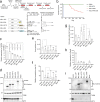
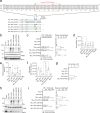
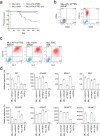
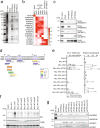

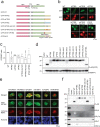
Similar articles
-
circRNA circAF4 functions as an oncogene to regulate MLL-AF4 fusion protein expression and inhibit MLL leukemia progression.J Hematol Oncol. 2019 Oct 17;12(1):103. doi: 10.1186/s13045-019-0800-z. J Hematol Oncol. 2019. PMID: 31623653 Free PMC article.
-
The AF4.MLL fusion protein is capable of inducing ALL in mice without requirement of MLL.AF4.Blood. 2010 Apr 29;115(17):3570-9. doi: 10.1182/blood-2009-06-229542. Epub 2010 Mar 1. Blood. 2010. PMID: 20194896
-
Instructive Role of MLL-Fusion Proteins Revealed by a Model of t(4;11) Pro-B Acute Lymphoblastic Leukemia.Cancer Cell. 2016 Nov 14;30(5):737-749. doi: 10.1016/j.ccell.2016.10.008. Cancer Cell. 2016. PMID: 27846391
-
Learning from mouse models of MLL fusion gene-driven acute leukemia.Biochim Biophys Acta Gene Regul Mech. 2020 Aug;1863(8):194550. doi: 10.1016/j.bbagrm.2020.194550. Epub 2020 Apr 19. Biochim Biophys Acta Gene Regul Mech. 2020. PMID: 32320749 Review.
-
Transcriptional activation by MLL fusion proteins in leukemogenesis.Exp Hematol. 2017 Feb;46:21-30. doi: 10.1016/j.exphem.2016.10.014. Epub 2016 Nov 16. Exp Hematol. 2017. PMID: 27865805 Review.
Cited by
-
Co-transcriptional R-loops-mediated epigenetic regulation drives growth retardation and docetaxel chemosensitivity enhancement in advanced prostate cancer.Mol Cancer. 2024 Apr 24;23(1):79. doi: 10.1186/s12943-024-01994-0. Mol Cancer. 2024. PMID: 38658974 Free PMC article.
-
ePRINT: exonuclease assisted mapping of protein-RNA interactions.Genome Biol. 2024 May 28;25(1):140. doi: 10.1186/s13059-024-03271-1. Genome Biol. 2024. PMID: 38807229 Free PMC article.
-
Multiple roles for AU-rich RNA binding proteins in the development of haematologic malignancies and their resistance to chemotherapy.RNA Biol. 2024 Jan;21(1):1-17. doi: 10.1080/15476286.2024.2346688. Epub 2024 May 27. RNA Biol. 2024. PMID: 38798162 Free PMC article. Review.
-
Targeting IGF2BP3 enhances antileukemic effects of menin-MLL inhibition in MLL-AF4 leukemia.Blood Adv. 2024 Jan 23;8(2):261-275. doi: 10.1182/bloodadvances.2023011132. Blood Adv. 2024. PMID: 38048400 Free PMC article.
-
Ppm1d truncating mutations promote the development of genotoxic stress-induced AML.Leukemia. 2023 Nov;37(11):2209-2220. doi: 10.1038/s41375-023-02030-8. Epub 2023 Sep 14. Leukemia. 2023. PMID: 37709843 Free PMC article.
References
-
- Look AT. Oncogenic transcription factors in the human acute leukemias. Science. 1997;278:1059–1064. - PubMed
Publication types
MeSH terms
Substances
LinkOut - more resources
Full Text Sources
Medical
Molecular Biology Databases
Research Materials

